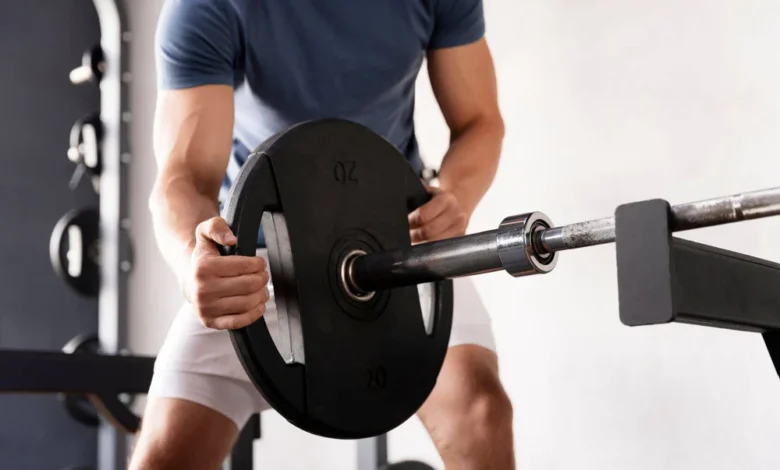Training without injuries – risks and prevention strategies in strength training

Weight training is becoming increasingly popular around the world, and the fitness hype has grown incredibly in recent years. However, like any other sport, weight training also carries a certain risk of injury.
Perhaps you or someone you know has unfortunately already had to experience this. In this article, I will present to you the frequency of injuries in weight training and highlight the most important risk factors and effective prevention strategies to avoid injuries and thus sustainably improve your performance.
Prevalence of Injuries in Weight Training
The term “prevalence” refers to the frequency of a disease or symptom in a population. Here, we use prevalence to refer to the frequency of an injury occurring per 1,000 hours of training. The prevalence of injuries in strength training varies depending on the study and discipline .
Basically, a distinction can be made between the following types of strength training: general strength training, powerlifting, bodybuilding and Olympic weightlifting.
With a maximum rate of 3.0 injuries per 1,000 training hours, bodybuilding appears to be the safest of the strength sports. This is probably because it involves a lot of machine training, mostly controlled and slow movements, and does not involve working with massively heavy loads, unlike in Olympic weightlifting or powerlifting. Here, the maximum rates are 3.3 (weightlifting) and 4.4 (powerlifting) injuries per 1,000 training hours. General strength sports have the highest rate with 4.5 injuries. Compared to other sports, however, the injury rates in strength sports are relatively low. In football, for example, we have a rate of 8.1 injuries per 1,000 training hours. The difference is mainly due to the fact that strength sports are an individual sport. We actually have few external influencing factors such as contact with opponents, which often leads to injuries in football.
Most common injury areas in strength training
The most common injuries occur in the lower back, shoulder and knee area. If you are actively involved in weight training, you will not be surprised that these areas of the body are often affected. Olympic weightlifters also often have injuries to their wrists and bodybuilders to their elbows. This is not surprising either, as these are precisely the areas that take the most damage in the respective type of weight training. However, the “injuries” are usually muscle strains or overuse problems. Serious injuries such as a torn pectoral muscle during bench presses are very rare in weight training. However, this is usually due to poor training planning and poor regeneration or, in the case of torn pectoral muscles, often due to the use of anabolic steroids. But now we will look at the specific risks in a little more detail.
The 5 Risk Factors for Injuries in Weight Training
The risk of injury in weight training can be influenced by many different factors. Although fitness and weight training are becoming increasingly popular, the studies on the risk of injury in this sport are not particularly clear or detailed. This highlights the diversity of risk factors and the individuality of athletes. It is therefore only possible to try to point out certain risk factors and keep them as low as possible in your own training or coaching.
I will therefore present the most important risk factors to you below.
#1 Demographic factors
Younger athletes tend to have a higher injury rate than older ones. This is probably mainly due to their experience in handling weights and training control. In many studies, men have a higher injury rate than women. Why this is the case has not yet been precisely investigated. One reason could be that men are generally more willing to take risks than women and are therefore more likely to expose themselves to higher weights. On the other hand, women are often underrepresented in studies on strength training, which could influence the difference. So if you have been doing strength training for a long time and you are a woman, then you probably have a small bonus point here.
#2 Physical limitations
Athletes with previous injuries have an increased risk of re-injury, sometimes up to three times higher. This is also logical. The injured or overstressed area is often stressed again too soon, which is something we know very well from other sports.
Another physical factor is improper technique in individual exercises. It should be common knowledge by now that we cannot divide technique into “bad” or “good” technique. Technique is very often a very individual factor and, especially when it comes to moving very heavy loads such as in powerlifting or weightlifting, it is very difficult to reduce it to “bad technique” alone. However, technique can become a risk if there is a significant breakdown in technique during the exercise that the individual does not normally have.
An example of this from powerlifting: An athlete is competing in his first competition. The squat was always a little too high in training, but a certain depth must be achieved in the competition. The athlete therefore tries to achieve the depth with a lot of weight in the competition and sits in the “hole” with a lot of weight on his back. This is a position that his structures are not yet used to and could increase the risk of injury. The athlete should therefore work diligently on his squat depth in training in preparation for the next competition, because unfortunately this does not come until the competition.
#3 Training Factors
Studies indicate that high training volumes and high intensities are associated with a higher injury rate. One study found that athletes who regularly lift very heavy weights suffer injuries more often. A kind of “off-season” therefore also seems to make sense in strength training. A high training frequency is also associated with a higher risk, which seems logical at first (more training hours, more injuries). Insufficient recovery time may also play a role.
#4 Lifestyle factors
Hopefully it won’t surprise you that nutrition and sleep play a major role in injury prevention in general. This has also been proven in strength training. A study found that strength athletes who regularly get enough sleep and eat a balanced diet are less likely to suffer injuries.
We already know from other sports that lack of recovery and psychological stress can be a risk factor for injuries – including in strength training.
#5 Equipment and gear
There is currently no evidence that the use of certain equipment (belts, bandages, special shoes, etc.) has a negative or positive influence on the occurrence of an injury. This factor probably depends very much on the correct use and the training experience of the athlete.
Prevention of Injuries in Weight Training
Regular technique checks and monitoring of the training process by experienced coaches can help to avoid injuries. In addition, targeted training control can reduce the risk of overload symptoms and injuries.

As a strength athlete, you should make sure that you get enough sleep to aid recovery. Good sleep and a healthy and balanced diet should be your top priority as regenerative measures. Reducing external stress is another regenerative measure. As in all other sports, adequate fluid intake is also very important.
Additional measures such as saunas, massages or “rolling out” with fascia rollers are neither necessary nor really beneficial in most cases, but can give you a generally better sense of well-being. A stretching program before strength training seems to have no or even a negative effect on reducing injuries (as in other sports, by the way). As a warm-up program, we therefore recommend five minutes of relaxed endurance, for example on the exercise bike, to raise your body temperature a little and/or a short mobility program. This should be tailored to you and your needs. In this case, five to ten minutes is completely sufficient. However, this is also not necessary at this point and there is no evidence that this reduces the risk of injury (but also none to prove the opposite). Basically, you should do a few warm-up sets, especially for exercises that use a lot of muscles and joints, to prepare your body for the following strain.



